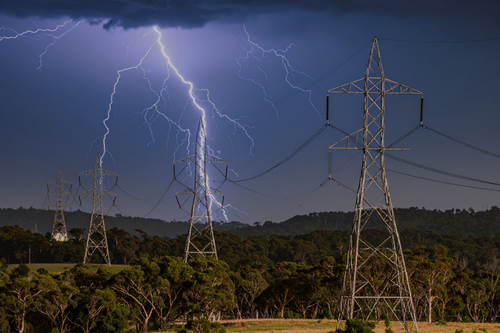Increasing network resilience against extreme wet weather
-
21 May 2025
-
Yogendra Vashishtha
The La Niña years have brought more cyclones, severe rainfall, and storm activity into Australia. Over the past few months, this has been evidenced by sudden downpours in Sydney, Melbourne, and Brisbane to more persistent storms in North Queensland to Western Australia that have dominated the news.
These heightened rainfall patterns have been noted by the BOM and the Commonwealth Scientific and Industrial Research Organisation (CSIRO) who have declared Australia’s rainfall patterns have increased annually. According to BOM, 2024 was the wettest year on record since 2011, while the CSIRO has suggested that warmer weather patterns is the cause behind more intense rainfall during storms.
Wet weather can significantly impact on how Distribution Network Service Providers (DNSPs) who serve close to 13 million customers in Australia’s metropolitan, regional to rural networks are compensated through the Service Target Performance Incentive Scheme (STPIS).
The Australian Energy Regulator (AER) provides DNSPs with an incentive through the scheme to improve the reliability and quality of electricity supply. A total amount of A$150 million is administered on average through the STPIS incentive and DNSPs could lose up to 5% of their revenue each year should they be penalised for poor reliability.
Maintaining customer satisfaction and reliability can be a challenge for DNSPs as Australia’s distribution infrastructure spans widely across the country covering one million kilometres with a mix of overhead and underhead cables.

Anecdotal evidence suggests that 80% of the national grid is built with overhead cables and they can be susceptible to heavy storms, lightning, and falling trees depending on where the cables are located. However, underground cables which are estimated to comprise 20% of the grid and less visible, are also subject to extreme weather events like storms that would flood and cause damage to the underground infrastructure. It is complicated and costly to repair underground cables as more time is needed to locate an underground cable fault with digging and traffic management required for works to be undertaken.
Any damage to underground cables would also impact on the low voltage (LV network) as it plays a crucial role in providing electricity in metropolitan cities as buildings and large populations restrict the use of overhead cables. While it’s important to monitor the entire network from high voltage (HV), medium voltage to LV, LV networks were deliberately not telemetered and monitored in the past due to cost considerations.
However, this has now changed as LV networks play a crucial role in enabling and integrating distributed energy resources (DER) such as rooftop solar, batteries and EV by supporting reverse power flow and flexibility in the grid.
Rooftop solar systems export excess energy to the grid and the development of Vehicle to Grid (V2G) technology, coupled with the electrification of transport and heating, emphasises the importance of maintaining a reliable LV network.
LV networks may not receive the same attention as HV networks because a smaller group of people are affected when the supply is interrupted. VisNet estimates that an outage of a LV cable network would typically affect 50-100 urban properties or 50 rural properties, whereas HV network outages tend to affect a larger number of customers.
Maintaining network visibility during harsh weather conditions where customers need a more resilient network to keep their lives powered through periods of uncertainty has become more critical than before.
With severe rainfall and storms increasing in Australia, this will illuminate pre-faults in the LV network. Advanced monitoring equipment delivers network visibility by detecting pre-faults before they become full faults so that DNSPs can carry out repairs before a full fault occurs.

Get in touch
Thank you for your interest in EA Technology. You can request information or a free callback by clicking the link below. One of our experts will be in touch with you shortly.